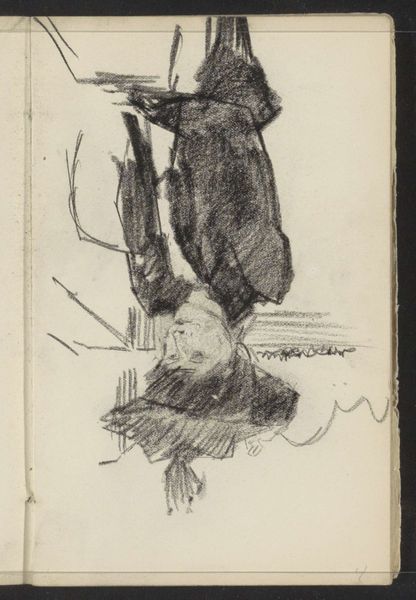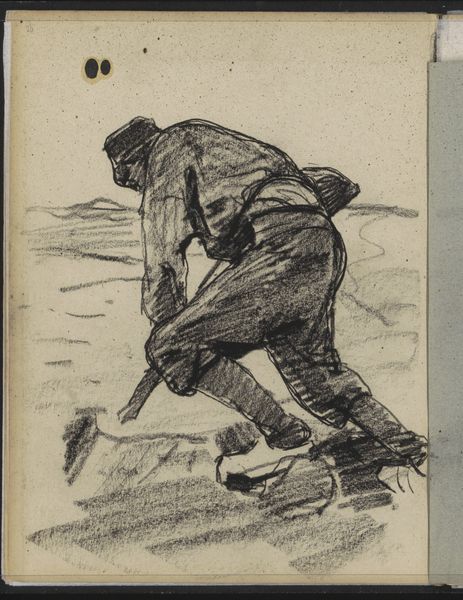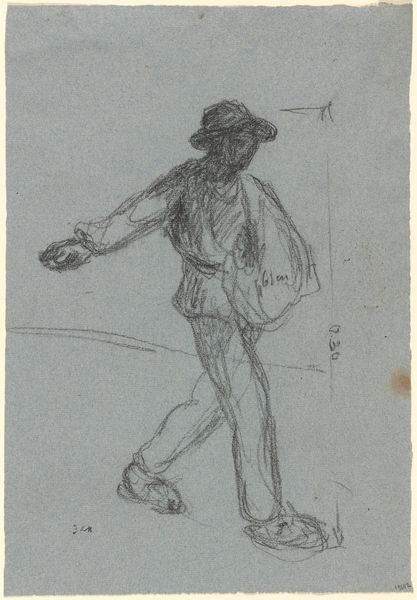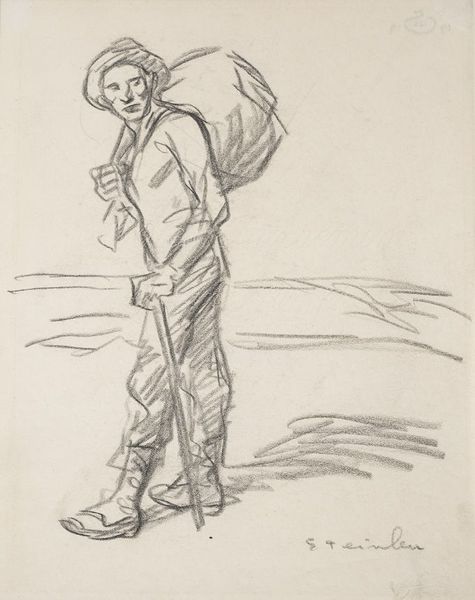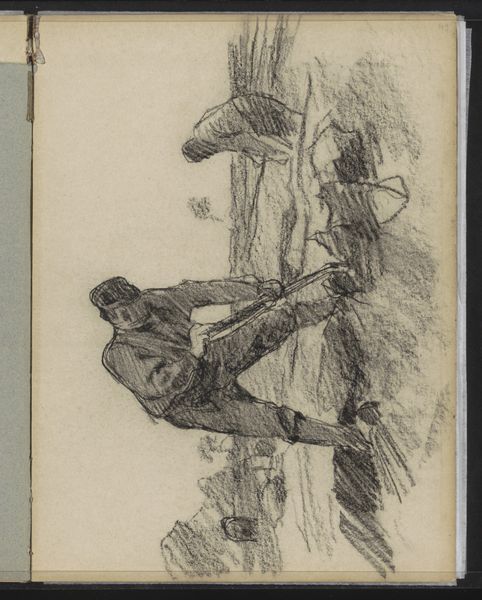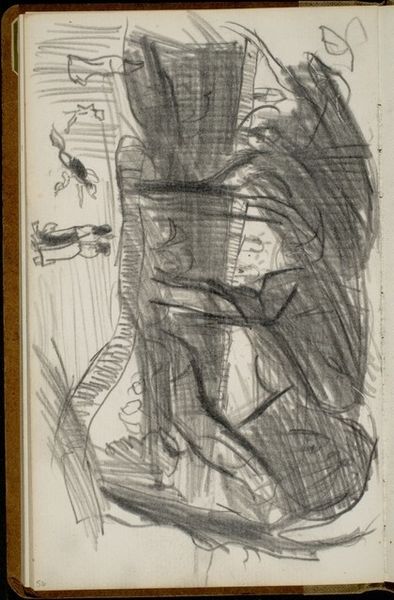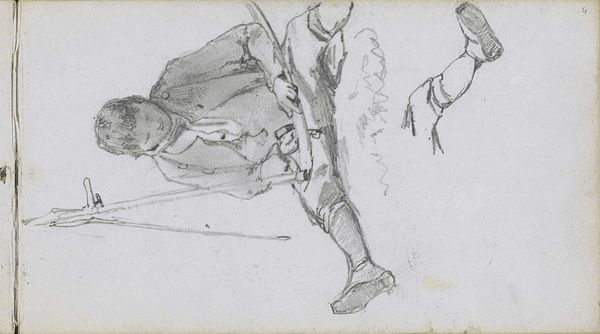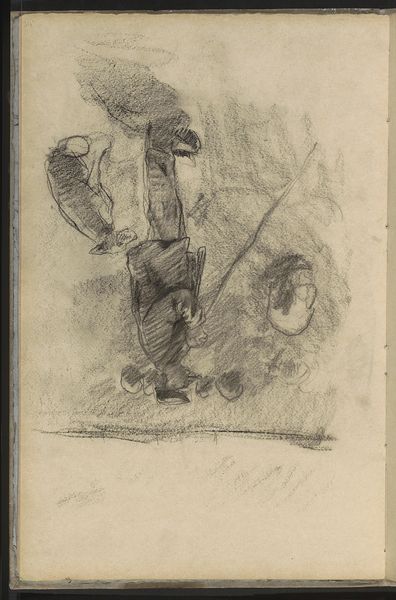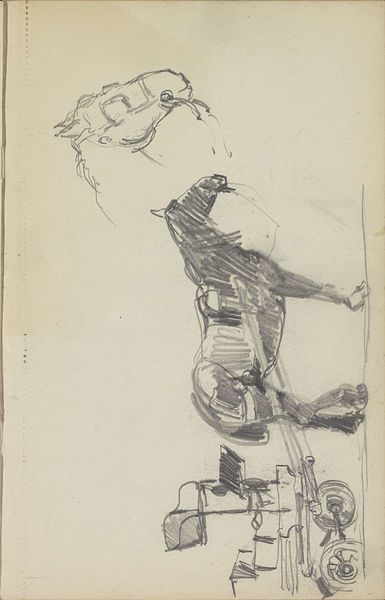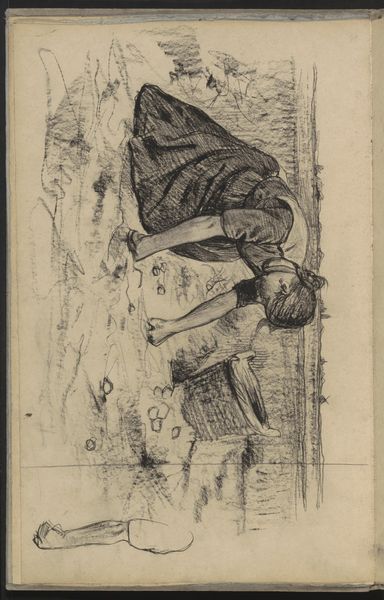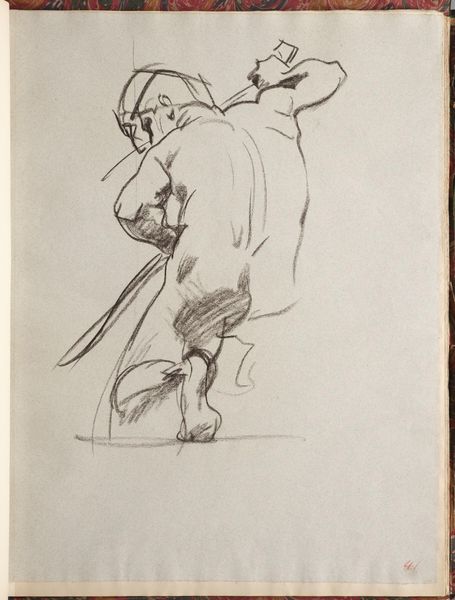
drawing, graphite
#
drawing
#
quirky sketch
#
pen sketch
#
sketch book
#
incomplete sketchy
#
landscape
#
figuration
#
personal sketchbook
#
sketchwork
#
pen-ink sketch
#
graphite
#
sketchbook drawing
#
sketchbook art
#
fantasy sketch
#
realism
Copyright: Rijks Museum: Open Domain
Editor: We’re looking at "Man met opgeheven bijl" - or "Man with Raised Axe" - a drawing by Willem Witsen from around 1884 to 1887, using graphite and pen and ink. It's a dynamic sketch, and the figure's pose is quite striking. What catches your eye in terms of the composition itself? Curator: The dominance of line, immediately. Observe how Witsen employs a frenetic hatching to model form, a technique particularly evident in the rendering of the figure's torso and legs. Note also the interesting spatial ambiguity he creates, refusing to fully delineate the background from the figure. This flattening effect collapses depth and forces us to confront the materiality of the drawing itself. Editor: So, it's more about the mark-making than depicting a scene realistically? Curator: Precisely. While a representational element exists, the real subject is the interplay of light and shadow conjured through Witsen's particular vocabulary of marks. Ask yourself, how does the gestural quality of the lines convey a sense of movement and potential energy, almost violence, even in this static image? Editor: That makes sense. I was focused on trying to understand the context of a man with an axe, but I see that the impact really comes from how the artist used the materials and the tension between the forms. Curator: Indeed. The subject, while present, is almost a pretext for a study in form and texture. The axe, for instance, is less a functional object than a compositional element balancing the figure within the picture plane. It creates this diagonal that supports and contains the entire figure. Editor: I see it now! Looking at it purely as an arrangement of lines and shapes, it's much more powerful. Thanks for pointing that out! Curator: My pleasure. Hopefully, considering art through a formal lens, one can find renewed meaning.
Comments
No comments
Be the first to comment and join the conversation on the ultimate creative platform.
